Positive displacement rotary lobe pumps and centrifugal pumps are the two main types used to transfer liquids. However, they have some distinct differences. They shows different talents when transfer liquids.The users should select with careful consideration. The following are the main differences between Positive displacement rotary lobe pumps and centrifugal pumps.
1. The difference in working principle
A Centrifugal Pump transfers the kinetic energy of the motor to the liquid through the rotating impeller. This increases the velocity and pressure at the discharge. The discharge velocity remains constant when motor rpm is constant. On the other hand, Positive displacement rotary lobe pumps suck a fixed volume of fluid in its cavity and force it to discharge into the pump outlet. So, it is a constant volume pump. Centrifugal pumps are high capacity and relatively low-head pumps whereas positive displacement pumps are low capacity high-head pumps.
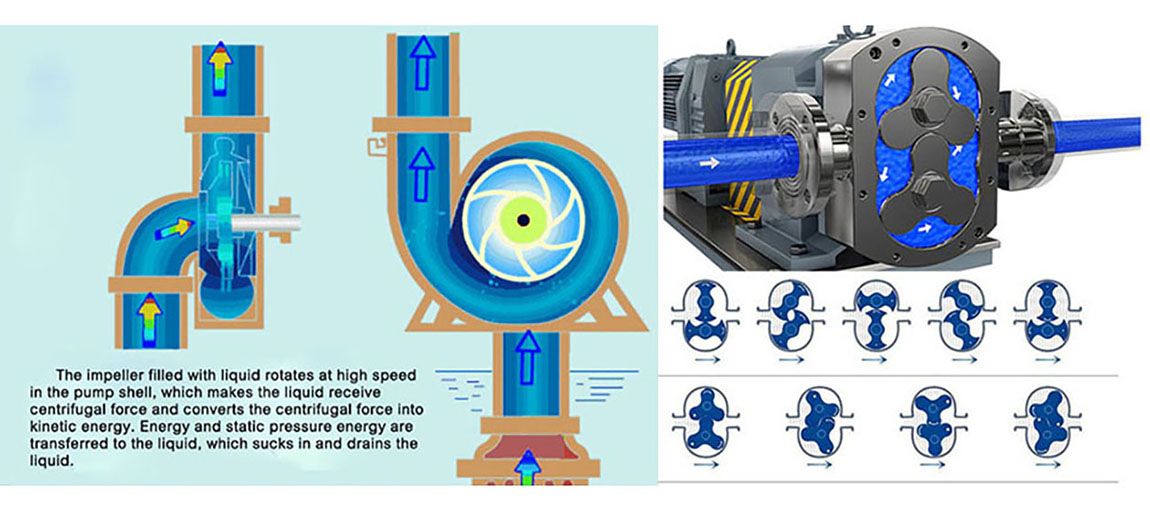
2. The Difference in fluid handling
A. The rotation speed of rotary lobe pump is directly proportional to the flow rate. For example, when their rotation speed is 100 rpm, the flow rate is 1 cubic, while when the rotation speed is 1000 rpm, it can be understood as 10 cubic, but there is a little efficiency loss, and the flow rate is about 9.5-9.8 cubic meters.
B. The centrifugal pump throws the medium out of the flow channel of the impeller by the high-speed rotation of the motor.
C. The viscosity of medium transferred by the rotary lobe pump is relatively large, such as heavy oil, viscous adhesives, food paste, etc.; The centrifugal pump can only deliver the medium with lower viscosity, and its delivery viscosity can only be lower than 3Cst.
3. The Difference in Performance
When you look at its performance table (Figure 1), centrifugal pumps and rotary lobe pump are quite different.
|
Centrifugal Pump |
Positive Displacement Rotary Lobe Pump |
|
A. Flow rate decreases with increasing viscosity |
A. Flow rate insensitive to changing pressure |
|
B. Flow varies with changing pressure |
B. Flow insensitive to changing pressure |
|
C. Efficiency decreases at both higher and lower pressures |
C. Efficiency insensitive to changing pressure |
|
D. Efficiency decreases with increasing viscosity |
D. Efficiency increases with increasing viscosity |

Fig. 1: Centrifugal Pump vs Rotary Lobe Pump Performance
4. The Difference in Inlet Conditions
These two types of pumps also have quite different requirements for inlet conditions. If you encounter periods where the pump remains "dry", a rotary lobe pump will prime on its own without liquid. On the other hand, a centrifugal pump is unable to create a pressure differential by priming without liquid already in the pump.
Centrifugal vs Positive Displacement Pump: Which one to Select?
A Positive Displacement Rotary Lobe pump will be a preferred selection in the following situations:
A. For high viscous applications.
B. For variable pressure conditions.
C. For changing viscosity conditions.
D. For high-pressure applications.
E. For shear sensitive liquids.
However, these are only a few criteria. Site experience accumulation is also required for selecting the right pump. Bonve is the leading manufacturer in rotary lobe pumps since 2001. When you choose a Bonve pump, you not only get the high quality pumps, but you also get the advantage of Bonve's engineering expertise and years of application knowledge in the food, chemical, pharmaceutical and cosmetics industries.
To find out more about Bonve rotary lobe pump, Click on the picture below

Rotary Lobe Pumps by BONVE: The Ultimate Solution for Efficient Fluid Transfer
In industries where precision, reliability, and efficiency are non-negotiable, the choice of pumping technology can make or break operations.
Enter BONVE’s Rotary Lobe Pumps—a game-changer in fluid handling systems. Designed for versatility and durability, these pumps are engineered to meet the rigorous demands of modern industrial applications.
Whether you’re in food processing, pharmaceuticals, chemicals, or wastewater management, BONVE’s rotary lobe pumps deliver unmatched performance. Let’s dive into what makes these pumps a standout choice.
What is a Rotary Lobe Pump?
A rotary lobe pump is a type of positive displacement pump that uses rotating lobes to transfer fluids. Unlike centrifugal pumps, which rely on high-speed impellers, lobe pumps operate at lower speeds while maintaining a gentle pumping action. This makes them ideal for handling shear-sensitive, viscous, or abrasive fluids without compromising product integrity. BONVE’s rotary lobe pumps feature a robust design with two synchronized lobes rotating within a precisely machined casing, ensuring smooth and pulsation-free flow.
Key Features of BONVE Rotary Lobe Pumps
1.High Efficiency & Precision
BONVE pumps are optimized for energy efficiency, reducing operational costs while maintaining consistent flow rates. Their precise lobe synchronization minimizes internal slip, ensuring accurate volumetric delivery even with challenging fluids.
2.Gentle Handling of Sensitive Products
For industries like dairy, beverages, or cosmetics, product consistency is critical. The pump’s low-shear operation preserves the texture, viscosity, and quality of delicate fluids like creams, sauces, or emulsions.
3.Durable Construction
Built with high-grade stainless steel, BONVE pumps resist corrosion, abrasion, and high temperatures. The hygienic design also meets strict sanitary standards (e.g., EHEDG, FDA), making them suitable for food and pharmaceutical applications.
4.Easy Maintenance
The pump’s modular design allows quick disassembly without moving the entire unit. Replaceable lobes and seals reduce downtime, while the CIP (Clean-in-Place) compatibility streamlines sanitation processes.
5.Versatility Across Fluids
From thick pastes and slurries to solvents and oils, BONVE pumps handle a wide viscosity range (up to 1,000,000 cP). They’re also effective for fluids containing solids or particulates, thanks to the generous clearances between lobes and the casing.
Applications of BONVE Rotary Lobe Pumps
Food & Beverage: Transferring syrups, chocolate, yogurt, or beer with zero contamination risk.
Pharmaceuticals: Metering sterile liquids, creams, or active ingredients.
Chemicals: Handling aggressive acids, polymers, or adhesives.
Wastewater Treatment: Moving sludge, grease, or bio-solids.
Cosmetics: Pumping lotions, shampoos, or fragrances.
Why Choose BONVE?
BONVE combines decades of engineering expertise with a customer-centric approach.
Here's why Bonve rotary lobe pumps are trusted globally:
Customizable Solutions: Tailored configurations for flow rates, materials, and sealing options.Global Support: A robust service network ensures prompt maintenance and spare parts availability.
Sustainability Focus: Energy-efficient designs align with eco-friendly industrial practices.
Conclusion
BONVE's rotary lobe pumps exemplify innovation and reliability in fluid transfer technology. By prioritizing efficiency, hygiene, and adaptability, they empower industries to optimize processes while reducing total cost of ownership. Whether you're upgrading existing systems or designing a new production line, BONVE's pumps are engineered to exceed expectations.
Ready to transform your fluid handling operations? Explore BONVE's rotary lobe pump range today—where precision meets performance.
Email: bvsales3@Bonvepumps.com for more information or contact our technical team for a customized solution!
How to remove and install the homogenizer mixing pump when pump ship to the destination port? Below are the tips to install Bonve high shear mixer.
1. Pump sent to area other than China will be packed in plywood case.
2. Users are advised to check the packing list, instruction manual, certificate of qualification, and other accessories attached after opening the wooden case.
3. Pump can be delivered to the installation site when the sealing bags at the inlet and outlet remain intact.
4. In hoisting, the hoist links at the pump body and the motor are available for use. If possible, users is better to carry the pumps with forklift trucks, handle with care.
5.The foundation of pump installation should have a horizontal plane. In line with the installation dimensions, four basic holes should be scooped first. Then ground screws are to be put into the holes for cement casting. When the cement is dry, use sizing block to adjust the chassis and make it horizontal. Lastly, screw up the ground bolts.

6. Pipe linking the pump should have supports respectively, which should not be the pump body.
7. To avoid damage to the pump's motor, install an overload current protection device during installation.
8. When the pump is installed, there should be a filter set ahead of the pump inlet. The filter screen should be 20 meshes or greater.
9. In installation, at pump inlet should be fixed a gauge valve for convenience of damaged meters replacement.
10. After the pump is installed, mark the ground connection point at the motor and make it connect the earth in accordance with the national safety standard.
11. If the pump is mobile type, hose should be used as at the inlet and outlet of the pump. In this case, valve and manometer are not necessary. The pump can only be pulled on level ground as four wheels (two of them are wheels) are fixed below the base plate. In case of too steep slope or a sharp turn, particular care should be taken to prevent any off-balance or sliding.
Click to view tips on installing Bonve rotary lobe pumps
Hello there! Today, let’s talk about pumps—the unsung “hearts” of industrial operations. But did you know? Not all pumps are created equal!
Thanks to two groundbreaking design innovations, our pumps deliver unmatched stability, durability, and cost savings. Let’s dive into the “secret tech” hidden in the details!
1. Bearing Design: Six-Point Support for Rock-Solid Stability!
Imagine balancing a glass of water with three fingers instead of two—wouldn’t it be steadier? That’s the philosophy behind our bearing system!
Pain Points of Traditional Pumps:
Most competitors use 4 bearings, leading to shaft wobbling, faster wear-and-tear, and frequent maintenance.
Our Solution:
Six independently placed bearings create a “triple-support” structure for each shaft:
Front-End Double Lock: Two cylindrical bearings secure radial movement, eliminating side-to-side wobble.
Back-End Powerhouse: A double-row angular contact bearing locks axial displacement, preventing forward/backward shifts.
Benefits You’ ll Love:
Zero vibration, zero pulsation—whether handling high or low pressure.
Extended bearing life boosts durability for the shaft, mechanical seal, and entire pump.
Maintenance? Barely needed! Save time, labor, and repair costs.
More details about Bonve lobe pump pls click the picture.
2. Shaft Key Design: No More Slipping, Just Seamless Sync!
Traditional pumps use shrink disks to connect gears and shafts—like glueing parts together. Under high pressure or sudden starts, gears slip or collide, causing breakdowns.
Our Innovation:
Meet the shaft key structure—a Lego-like precision fit!
Gears and shafts interlock via precisely machined keyways, ensuring perfect synchronization.
Handles high pressure, viscous fluids, and instant startups without a hiccup!
Why It Matters:
Zero collisions, zero downtime—maximize production efficiency.
Slash failure rates and keep your operations running smoothly.
3. Why Choose Us?
Stability: 6 bearings vs. competitors' 4.
Durability: Shaft keys outlast shrink disks.
Peace of Mind: Reduce maintenance costs—your team will thank you!
Final Thought:
A pump's true power lies in its hidden details. Our design isn't about flashy features—it's about making your operations faster, smoother, and hassle-free.
Next time you need a pump, ask: “Does it have six bearings and a shaft key?”
Ready to upgrade? Contact us for a tailored solution!
Earthquake resistant engineering has evolved significantly in recent years, incorporating cutting-edge materials and technologies to enhance structural resilience. One such innovation is the application of neodymium magnets, which have emerged as a promising tool for mitigating earthquake-induced damage. These powerful rare earth magnets offer unique properties that can improve energy dissipation, damping mechanisms, and overall structural stability during seismic events.
Magnetic Damping Systems
Neodymium magnets play a crucial role in passive damping systems, which help reduce the amplitude of seismic vibrations. Engineers have developed magnetorheological (MR) dampers, where a fluid infused with iron particles responds to magnetic fields generated by neodymium magnets. By adjusting the magnetic field intensity, the viscosity of the fluid changes, allowing real-time control over damping forces and improving a building’s ability to withstand earthquakes.

Magnetic Levitation for Base Isolation
Another innovative application of neodymium magnets in seismic engineering is in base isolation systems. Traditional base isolators rely on rubber and steel layers to absorb ground motion. However, researchers are exploring the use of magnetic levitation, where high performance neodymium magnets create repulsive forces that suspend structures above their foundations. This system significantly reduces the transmission of seismic energy to the building, minimizing structural damage.
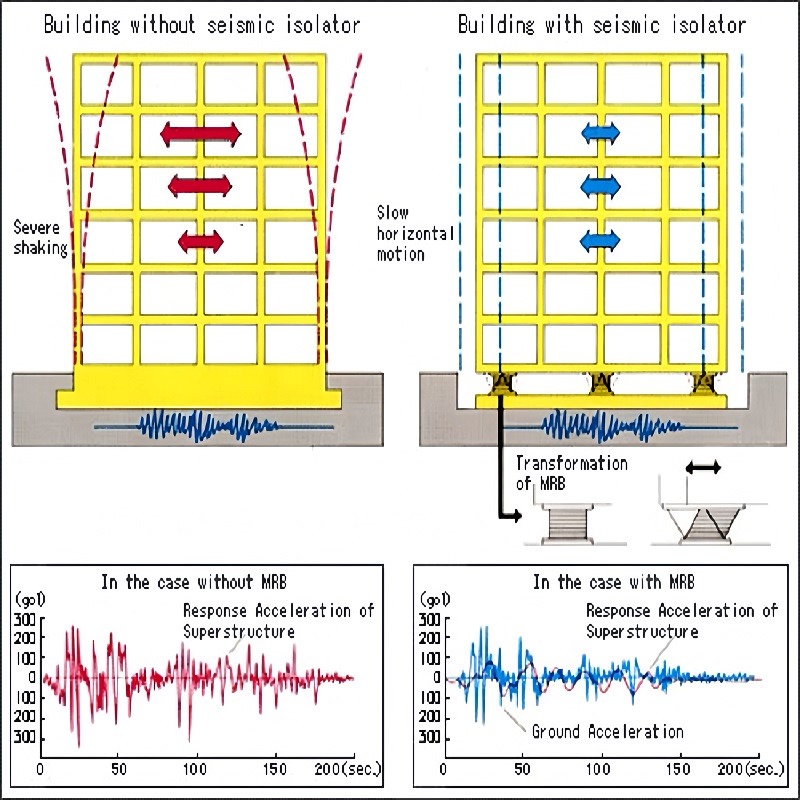
Energy Harvesting for Structural Monitoring
Neodymium magnets are also being used for energy harvesting in earthquake-resistant buildings. By converting mechanical vibrations into electrical energy, magnetic induction systems powered by neodymium magnets can supply energy to structural health monitoring devices. These sensors help detect early signs of damage and provide real-time data to engineers, ensuring timely maintenance and safety assessments.
Future Prospects
The use of good quality neodymium magnets in earthquake resistant engineering is still evolving, with ongoing research exploring new ways to enhance earthquake resistance. As technology advances, we can expect more cost-effective and efficient applications, improving the safety and durability of infrastructure in earthquake-prone regions.
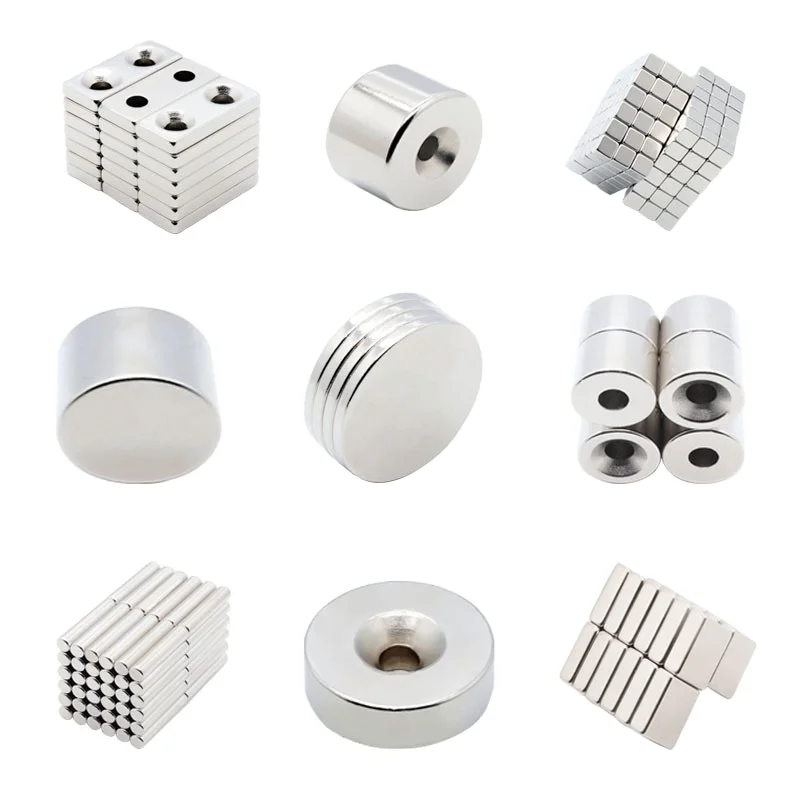
Neodymium magnets, known for their exceptional magnetic strength and compact size, are playing an increasingly vital role in advancing space exploration technologies. Their unique properties make them indispensable in both spacecraft propulsion systems and the emerging field of space resource utilization. However, their application in the harsh environment of space also presents significant challenges.
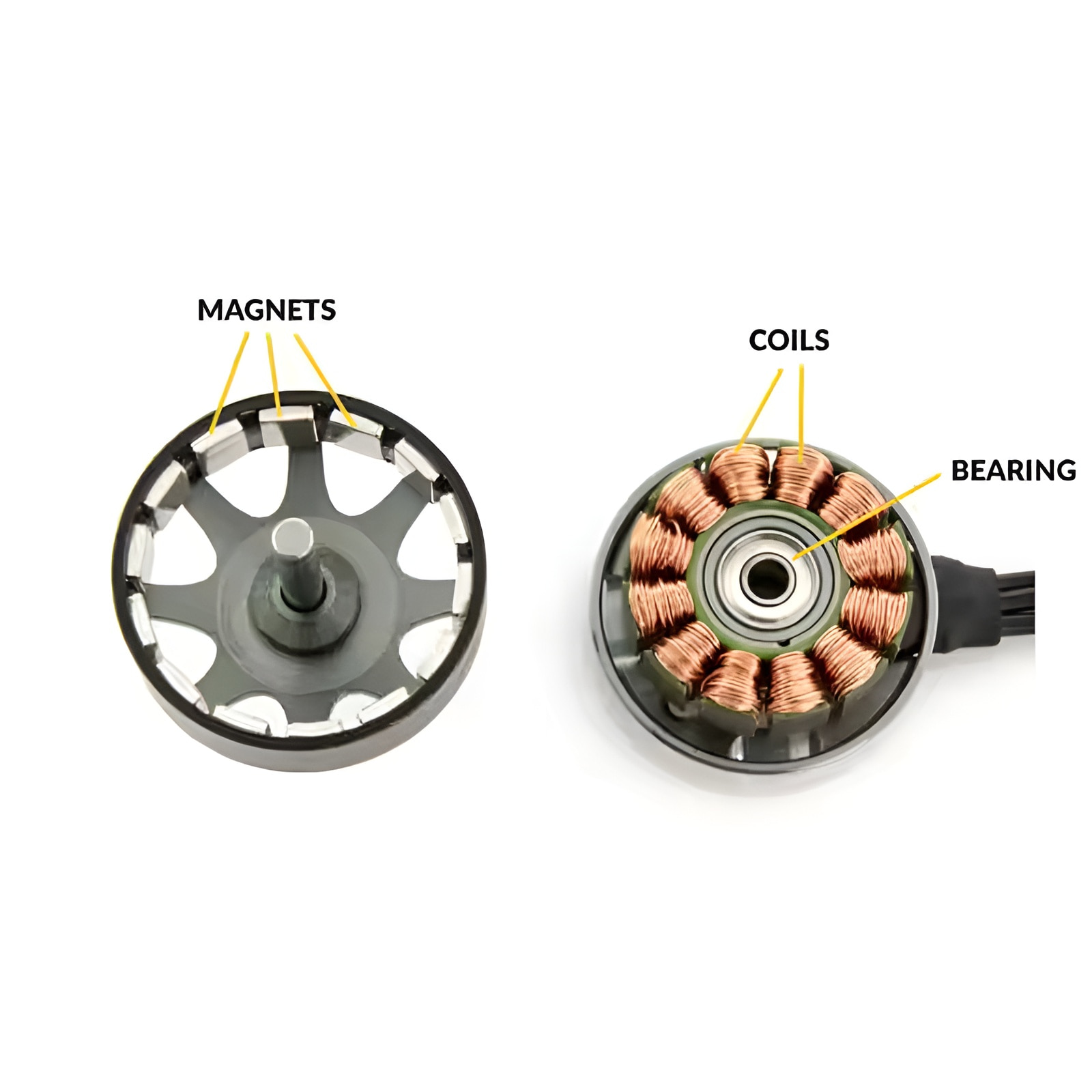
One of the most promising applications of high performance neodymium magnets is in advanced propulsion systems, such as ion and plasma propellers. These systems rely on strong magnetic fields to accelerate charged particles, generating thrust with high efficiency. Neodymium magnets, with their high magnetic energy density, are ideal for creating the compact yet powerful magnetic fields required. For example, in ion propellers, these magnets help confine and direct plasma, enabling spacecraft to achieve higher speeds while consuming less fuel compared to traditional chemical propulsion. This technology is particularly valuable for long-duration missions, such as interplanetary travel, where efficiency is critical.
Another exciting frontier is the use of neodymium magnets in space resource extraction, particularly in asteroid mining. Asteroids are rich in valuable metals like iron, nickel, and rare earth elements. Neodymium magnets can be employed to separate and collect these magnetic materials in the micro gravity environment of space. For instance, magnetic separators equipped with neodymium magnets could efficiently extract iron-rich particles from asteroid weathering layer, paving the way for in-situ resource utilization (ISRU). This capability could reduce the need to transport materials from Earth, significantly lowering the cost and complexity of space missions.

Despite their potential, super quality ndfeb permanent magnets face challenges in space applications. The extreme conditions of space, including high levels of radiation and drastic temperature fluctuations, can affect their performance. Prolonged exposure to cosmic radiation may lead to demagnetization, while temperature variations can alter their magnetic properties. Additionally, the micro gravity environment poses unique engineering challenges in designing systems that can reliably operate with magnetic forces.
To overcome these challenges, ongoing research focuses on developing radiation-resistant coatings and advanced alloys that enhance the durability of neodymium magnets in space. Furthermore, innovations in magnetic system design aim to optimize their performance in micro gravity. As space exploration continues to expand, the role of neodymium magnets is expected to grow, enabling more efficient propulsion, sustainable resource utilization, and groundbreaking discoveries in the cosmos.

In conclusion, powerful neodymium rare earth magnets are a key enabler of modern space exploration, offering solutions to some of the most pressing challenges in propulsion and resource extraction. However, addressing their limitations in space environments will be crucial to unlocking their full potential.
Motorcycle battery plates, also known as battery grids or battery plates, are an important component of a motorcycle battery. They are typically made of lead or a lead alloy and play a key role in the battery's function. In this blog we're sharing some information about motorcycle battery plates.
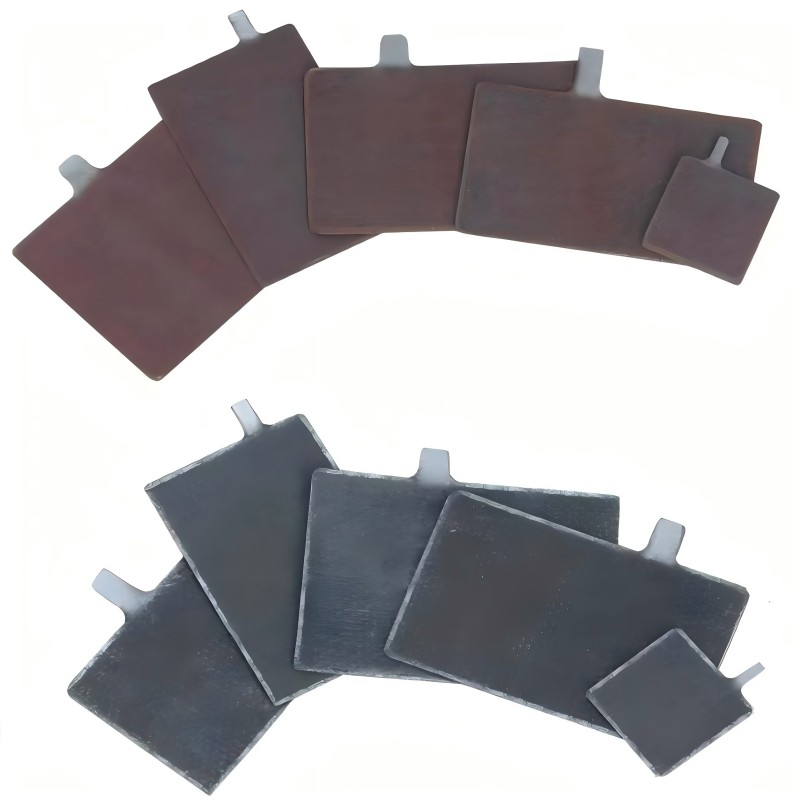
 Basic Info
Basic Info
1. Material:
The plates are typically made of a lead-based material, which is chosen for its durability, conductivity, and electrochemical properties. The lead can be combined with other elements such as antimony, calcium or tin to enhance specific battery characteristics.
2. Design:
Motorcycle battery plates consist of positive and negative plates arranged alternately in a cell. These plates are usually made up of a series of grids or mesh-like structures with active material pasted onto the surface. The design allows for the efficient storage and release of electrical energy.
3. Electrochemical Reaction:
When a motorcycle battery is being discharged, lead oxide on the positive plate combines with sulfuric acid to generate lead sulfate and release electrical energy. During the charging process, the lead sulfate is converted back into lead oxide and sulfuric acid.
 How do you check if the motorcycle battery plate is in a good condition?
How do you check if the motorcycle battery plate is in a good condition?
1. Visual Inspection
●Start by examining the exterior of the battery for any signs of damage, such as cracks, leaks, or corrosion. Ensure that the battery terminals are clean and securely connected.
●Check the battery case for bulges or swelling, which may indicate internal damage.
2. Battery Load Test
●Use a voltmeter to measure the battery voltage when the engine and lights are turned off. A fully charged lead acid battery should have a voltage reading between 12.6V to 12.8V.
●Start the motorcycle and measure the voltage across the battery terminals while the engine is running at a moderate RPM. The voltage should read between 13.8V to 14.5V, indicating that the charging system is functioning properly.
●If the voltage readings are within the acceptable range, the battery plate is likely in good condition. However, if the voltage is significantly lower than the recommended values, it may indicate a weak or damaged battery.
In conclusion, motorcycle battery plates are integral to the functioning of the battery, enabling the storage and release of electrical energy. As a motorycle battery plate supplier, we can say for sure that battery plate plays the most important part in batteries. Therefore, choosing good battery plates is extremely crucial.
Sealed Lead Acid Batteries (SLA batteries) have been widely used in medical equipment. These batteries provide a stable and consistent power supply. This blog will guide you why Sealed Lead-Acid Batteries are a prefered choice for medical devices.

Suitable For Various Applications:
SLA batteries are commonly used in portable medical devices such as portable ultrasound devices, defibrillators, patient monitoring devices, etc. These devices require a reliable power source to ensure normal operation in emergency situations, and SLA batteries can provide stable power support.
Backup Power Supply:
SLA batteries are often used as backup power sources in medical equipment. For example, in the event of a power outage or unstable power supply, providing power to critical equipment such as ventilators and electrocardiographs to ensure their normal operation.
Characteristic:
 High reliability: SLA batteries have good reliability and can work stably in various environments. Its sealing design prevents acid leakage and reduces maintenance requirements.
High reliability: SLA batteries have good reliability and can work stably in various environments. Its sealing design prevents acid leakage and reduces maintenance requirements.
 Strong durability: SLA batteries have a sturdy structure that can withstand vibrations and impacts, making them suitable for use in medical environments. Its service life is usually between 3 and 5 years, and if used properly, it can even be longer.
Strong durability: SLA batteries have a sturdy structure that can withstand vibrations and impacts, making them suitable for use in medical environments. Its service life is usually between 3 and 5 years, and if used properly, it can even be longer.
 Cost effectiveness: Compared to other types of batteries, SLA batteries have lower costs, making them an affordable choice within limited budgets.
Cost effectiveness: Compared to other types of batteries, SLA batteries have lower costs, making them an affordable choice within limited budgets.
 Deep cycling capability: Many SLA batteries are designed for deep cycling, which means they can be repeatedly charged and discharged without significant capacity loss.
Deep cycling capability: Many SLA batteries are designed for deep cycling, which means they can be repeatedly charged and discharged without significant capacity loss.
Safety and Compliance:
 Safety standards: SLA batteries used in medical devices need to comply with relevant safety standards, such as UL, CSA, and TUV certifications. These standards include requirements for the operational performance of batteries, safety under fault conditions, environmental testing, mechanical testing, as well as labeling and instructions for use.
Safety standards: SLA batteries used in medical devices need to comply with relevant safety standards, such as UL, CSA, and TUV certifications. These standards include requirements for the operational performance of batteries, safety under fault conditions, environmental testing, mechanical testing, as well as labeling and instructions for use.
 Medical device standards: In addition to the standards of the battery itself, the batteries used in medical devices also need to comply with specific medical device standards, such as the IEC 60601-1 series. These standards have additional requirements for battery ventilation, installation, short-circuit protection, battery status indication, labeling, and instructions for use.
Medical device standards: In addition to the standards of the battery itself, the batteries used in medical devices also need to comply with specific medical device standards, such as the IEC 60601-1 series. These standards have additional requirements for battery ventilation, installation, short-circuit protection, battery status indication, labeling, and instructions for use.
Conclusion:
The combination of reliability, safety, cost-effectiveness, durability, and regulatory compliance makes VRLA batteries a preferred choice for medical devices. These characteristics ensure that medical equipment can operate reliably and safely, even in critical situations.
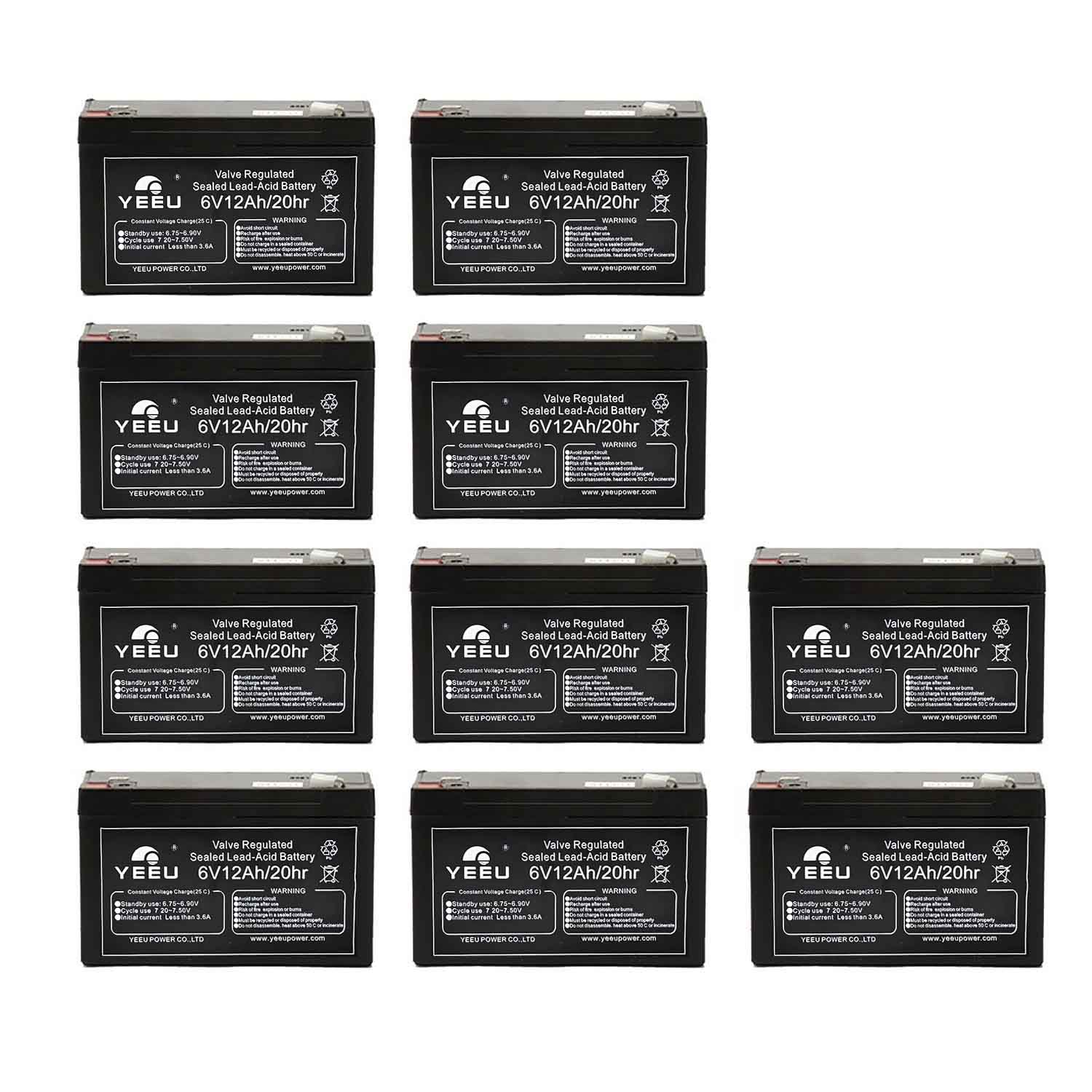
Gasoline Generator are most commonly supplied with lead-acid bateries. The best type of battery for generator is always sealed lead acid battery. In this blog we're talking about why Vrla Batteries have been widely used in Gasoline Generator.
 |
 |
Cost-Effectiveness:
Lead acid batteries are relatively inexpensive compared to other types of batteries. They offer a cost-effective solution for providing backup power in gasoline generators.
High Starting Power:
Gasoline generators require a high initial surge of power to start the engine. Lead acid batteries have the capability to deliver high current output, making them suitable for the starting process.
Durability and Resilience:
Lead acid batteries are known for their durability and ability to withstand harsh operating conditions. They can handle high levels of vibration and are less susceptible to damage from overcharging or deep discharging, which can occur in generator applications.
Low Self-Discharge:
Well-Established Technology:
The lead acid battery technology has been around for a long time and is well-understood. It has been widely used in various applications, including automotive and industrial sectors, making it a familiar and trusted choice for generator manufacturers.
Availability and Serviceability:
Lead acid batteries are readily available in the market, and there is a wide network of service providers for maintenance, repair, and replacement. This ensures that users can easily obtain batteries and access support when needed.
Reliability:
Lead acid batteries have a proven track record of reliable performance. They can provide consistent power output over a reasonable lifespan if properly maintained.
Maintenance-Free Options:
While traditional flooded lead-acid batteries require regular maintenance, modern valve-regulated lead-acid (VRLA) batteries, including AGM (Absorbent Glass Mat) types, are maintenance-free and spill-proof.
In general, their overall benefits make them a practical and popular choice for gasoline generators.
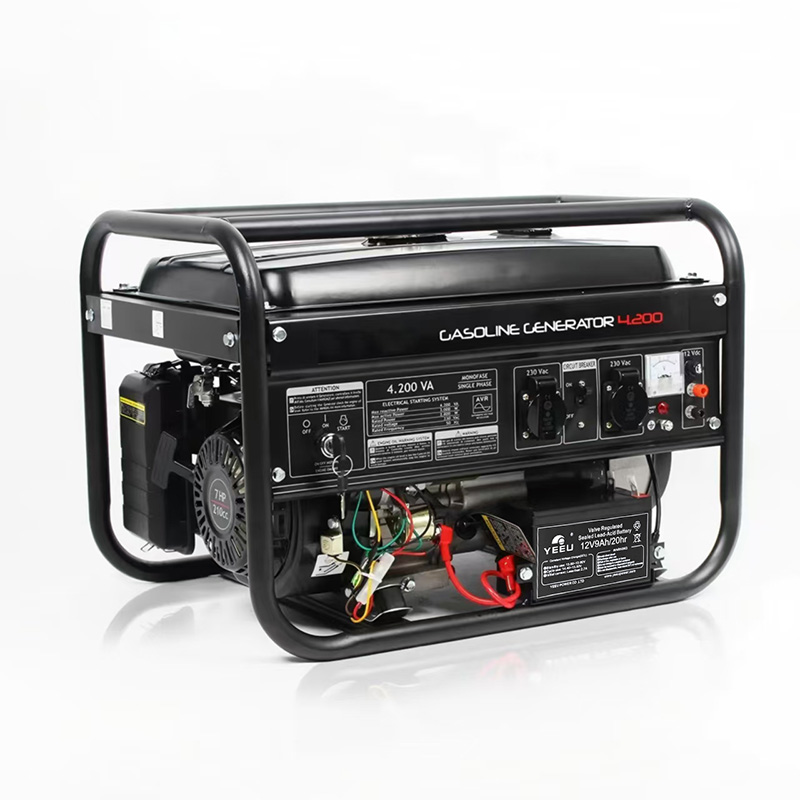 |
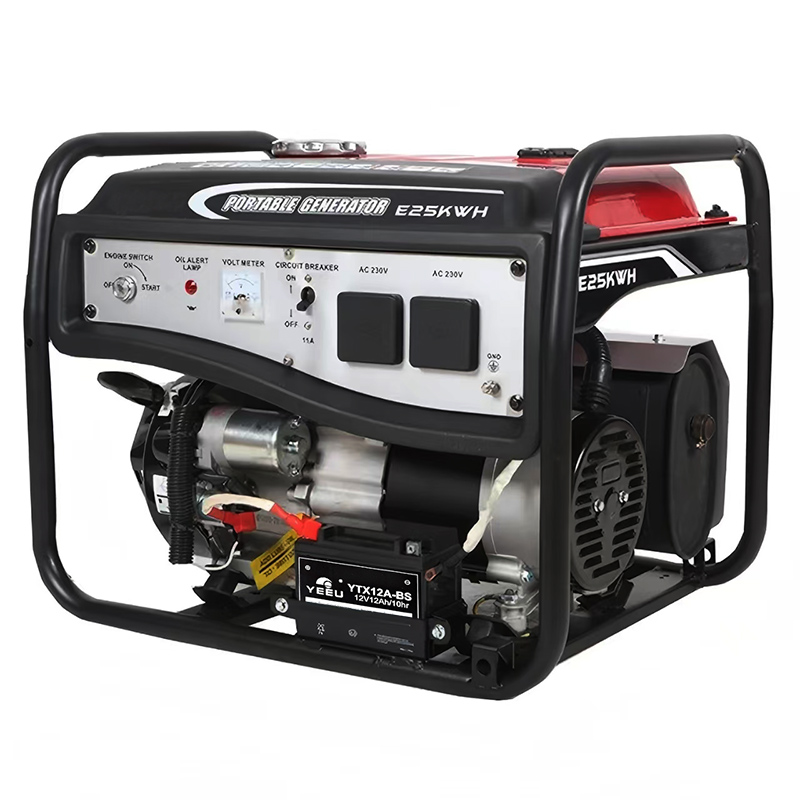 |
High temperature resistant ndfeb magnets are widely used in various applications due to their powerful magnetic properties. However, their performance tends to degrade at high temperatures, which limits their use in certain environments. The good news is that there are several methods to enhance the high-temperature resistance of these magnets, allowing them to maintain their strength and functionality in extreme conditions.
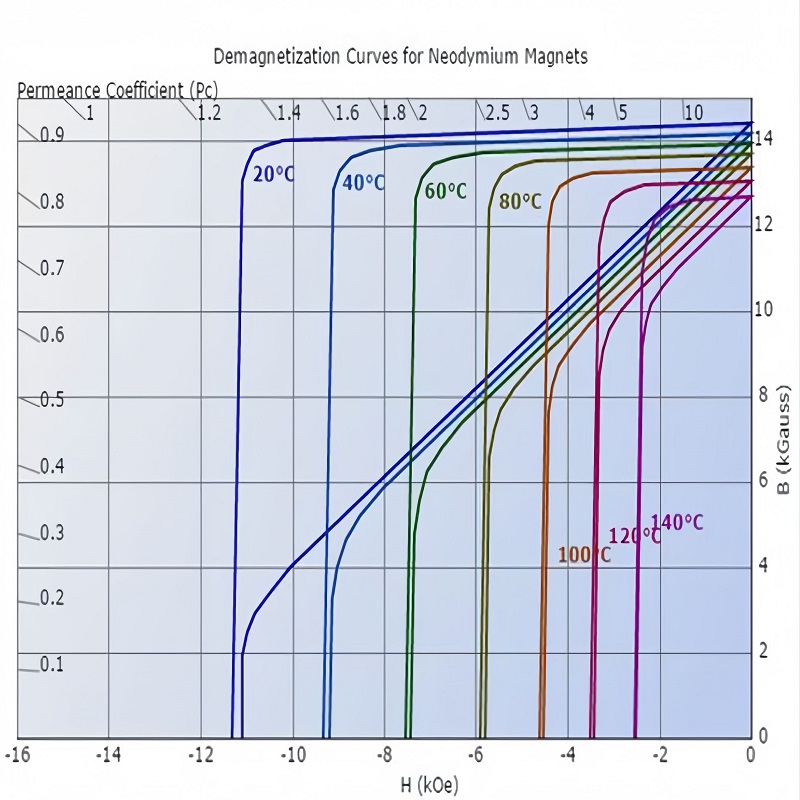
Material Composition Adjustments
One of the most effective ways to improve the high-temperature stability of neodymium magnets is by modifying their material composition. By introducing specific elements into the alloy, such as dysprosium (Dy) or terbium (Tb), the magnets can be made more resistant to heat. Dysprosium, in particular, helps to improve the coercivity (resistance to demagnetization) of neodymium magnets at elevated temperatures. This ensures that the magnet retains its strength even when exposed to extreme heat.
Coatings and Surface Treatments
In addition to altering the material composition, coatings and surface treatments play a crucial role in enhancing the high-temperature performance of durable rare earth magnets. Applying protective coatings can help shield the magnets from oxidation, which is another factor that can degrade their performance at high temperatures. These coatings provide a thermal barrier and help maintain the structural integrity of the magnet, even in harsh environments.
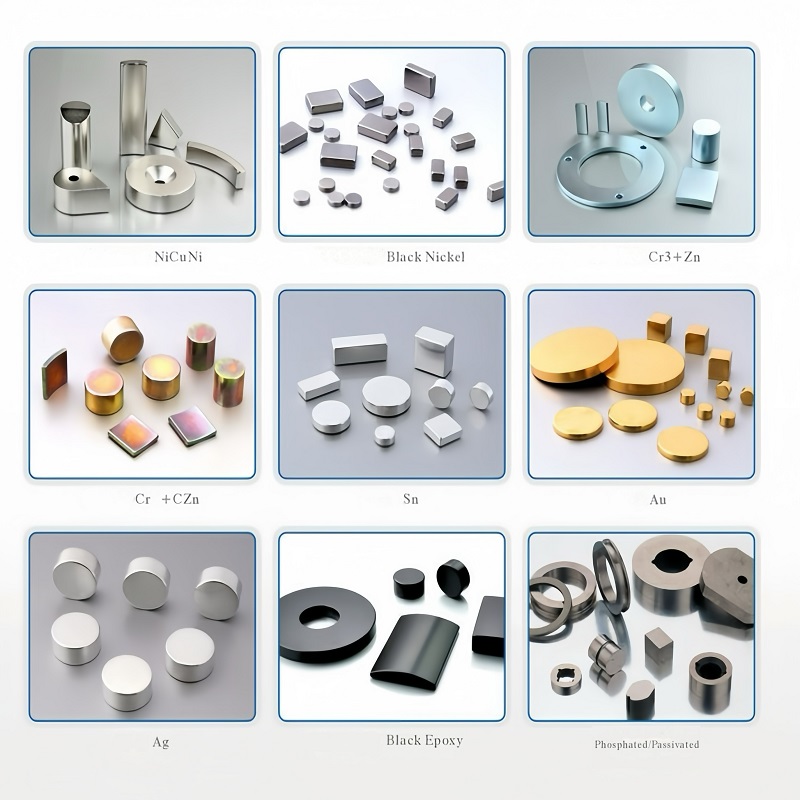
Advanced Magnet Design
Another approach to improving high-temperature performance is through advanced magnet design. For example, incorporating multi-layered coatings or using composite magnet structures can help distribute thermal stress more evenly. This allows the magnets to handle temperature fluctuations better without compromising their magnetic strength.
Conclusion
While neodymium magnets are known for their powerful magnetic properties, their performance at high temperatures can be a challenge. By adjusting their material composition, applying protective coatings, and optimizing their design, it is possible to significantly improve their high-temperature resistance. As technology continues to advance, these innovations will allow good performance neodymium magnets to be used in even more demanding applications, from electric vehicles to aerospace technology, where high temperature stability is critical.
| suffix on a brand name | Rev.Temp.Coef.of Induction(br),a,%/℃(20-100℃) | Rev.Temp.Coef.of Coercivity(Hci),b,%/℃(20-100℃) | Maximum working temperature |
| N | -0.12 | -0.6 | 80℃=176℉ |
| N | -0.12 | -0.58 | 100℃=212℉ |
| H | -0.11 | -0.58 | 120℃=248℉ |
| SH | -0.1 | -0.55 | 150℃=302℉ |
| UH | -0.09 | -0.52 | 180℃=356℉ |
| EH | -0.085 | -0.5 | 200℃=392℉ |
| VH/AH | -0.08 | -0.45 | 230℃=446℉ |
| 60℃ for N50 and N52 |
- Automotive Engine Rubber Parts8
- Automotive Lamps Rubber Parts5
- Automotive Suspension Rubber Parts2
- Automotive Wiring Harness Rubber Parts3
- Extrusion Sealing Strip1
- Industrial Electrical Rubber Parts3
- Industrial Scanners2
- Industrial electrical control3
- Industrial slings4
- Machine Tool Blades1
- Membrane Products1
- Motor1
- Racecource Rubber Products3
- Rubber Forklift Attachments1
- Rubber and plastic Parts1
- Seal2
- Tubular Motor2
- industrial hose1
- mold1
- plc2
- pump1
- racking2
